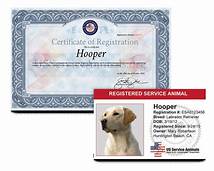How to Register Your Pet as a Service Animal
Service animals play a crucial role in providing independence and safety to individuals with disabilities. Registering your pet as a service animal is a legal process that varies from state to state. Here are the general steps involved in registering your pet as a service animal:

Step 1: Determine Eligibility
Verify if your pet meets the eligibility criteria for service animals, which typically includes:
1. The pet must perform specific tasks for you related to your disability.
2. The tasks must be directly related to the disability.
3. The pet must be trained to perform these tasks reliably and consistently.
Step 2: Veterinary Examination
Schedule a comprehensive veterinary examination for your pet to ensure they are healthy, up-to-date on vaccinations, and free of any contagious diseases.
Step 3: Training Certification
Enroll your pet in a reputable service animal training program or work with a qualified professional to train your pet to perform the required tasks.
Once the training is complete, obtain a written certification from the trainer or professional confirming that your pet is adequately trained as a service animal.
Step 4: Documentation and Identification
Gather the following documentation:
1. A letter from your doctor or healthcare provider stating your disability and explaining how the service animal helps you manage it.
2. The certification from the trainer or professional verifying your pet's training.
3. Proof of your pet's vaccinations and health records.
4. A photo of your pet.
Create a service animal identification card or vest indicating that your pet is a trained service animal.
Step 5: Register with Your State or Local Government
Depending on your location, you may need to register your service animal with the relevant state or local government agency. Check with the appropriate authorities to determine if registration is required in your area.
Step 6: Educate Yourself About Service Animal Laws
Familiarize yourself with the service animal laws in your state and at the federal level. Understand your rights and responsibilities as a service animal handler.
Additional Tips:
1. Keep your pet's training current through ongoing reinforcement and refresher courses.
2. Be prepared to provide documentation and identification for your service animal when necessary.
3. Treat your service animal with respect and compassion. They are not pets but partners providing invaluable assistance.
Declaration: All article resources on this website, unless otherwise specified or labeled, are collected from online resources. If the content on this website infringes on the legitimate rights and interests of the original author, you can contact this website to delete it.





